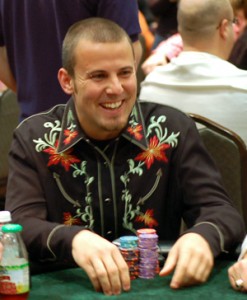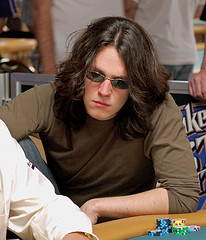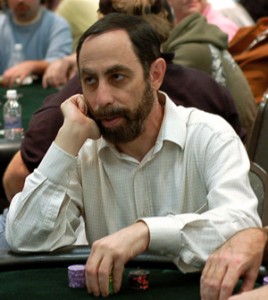The chaos that seems to prevail in the labor markets conceals a pattern of order which can be explained and which sheds light on the influences that determine the inter-industry wage structure in the community – Sumner Slichter

Hang with me now; this eventually has something to do with poker.
In 1950, an economist named Sumner Sliichter changed the debate relative to labor market economics by using a different statistical lens to view wage behavior. He found, among other things, that a country’s wages were not solely determined by a single labor supply and demand function as many had assumed. He found that wages within an industry were a function of the individual industry’s “ability to pay” or its profitability.
In our world today, this would imply that the guy that orders materials for a computer company is probably paid more than the guy who orders materials for a textile mill, even though they may have the same educational background and skill. It doesn’t seem so ground breaking to us, as we intuitively know this, but back then it was a monster of a discovery. A country’s wage system is defined by the relative health and profitability of its underlying industries. It blew the door open to the field of industrial policy.
 There were a couple of threads on 2+2 this week (no, not the latest BH drama bomb) based on a pokerroad radio interview that made me realize how narrowly we’ve defined “math” in poker. To a great extent, the paradigm we operate in relegates math to long-run probabilities and simulations based on comparative hand strength and an opponent’s likelihood to fold or call. In short, we use “long-run” EV to govern short-term situations, devoid of context. Anything behavioral, based on table make-up, or players’ demonstrated actions, is chalked up to intuition and somehow separate from the “math” of poker.
There were a couple of threads on 2+2 this week (no, not the latest BH drama bomb) based on a pokerroad radio interview that made me realize how narrowly we’ve defined “math” in poker. To a great extent, the paradigm we operate in relegates math to long-run probabilities and simulations based on comparative hand strength and an opponent’s likelihood to fold or call. In short, we use “long-run” EV to govern short-term situations, devoid of context. Anything behavioral, based on table make-up, or players’ demonstrated actions, is chalked up to intuition and somehow separate from the “math” of poker.
 While I might argue with his choice of words, I agree with Barry Greenstein : “I always laugh when I hear these kids talk about math…my PhD was in combinatorial number theory…I know math probably better than every single one of those kids and I can tell you, that as a group, they don’t know how to use math for poker, they think they do, but they don’t.” Of course my objection is with the use of “these kids.” Our perception and definition of math in poker is far more systemic.
While I might argue with his choice of words, I agree with Barry Greenstein : “I always laugh when I hear these kids talk about math…my PhD was in combinatorial number theory…I know math probably better than every single one of those kids and I can tell you, that as a group, they don’t know how to use math for poker, they think they do, but they don’t.” Of course my objection is with the use of “these kids.” Our perception and definition of math in poker is far more systemic.
Joe Sebok claimed that he does not play according to math; but he refers to the math as defined by our poker paradigm. I would argue that in many ways, Joe’s decisions (and the decisions of both online and live players – god I hate that futile debate) are dictated by more complex mathematical concepts than Joe has probably ever studied.
If Joe had chosen statistics as his field of study, my guess is that he would have been a Bayesian. Bayesian statistics mathematically incorporates what we just learned (our “priors”) into what we are likely to expect. In their first hand together, Haxton reraises Sebok. Sebok has pocket kings and makes an easy call. Haxton shows down A-T. In their next hand together Haxton reraises Sebok again. Sebok calls with a somewhat weaker hand this time, pocket nines. Sebok admits this is a hand he might have folded had the previous hand not occurred; totally consistent with Bayesian statistics.
Another concept in the same vein that Haxton fails to address is habituation. This is a behavioral concept that we all know well. A fire alarm sounds in your workplace. You panic. You evacuate. It’s just a drill. A week later, the same thing happens. You panic a little less. You still evacuate. It turns out to be another drill. As each drill occurs, your response to the same stimuli diminishes. Pretty soon you’re sticking your middle finger in the air at the blaring alarm while you carry on at your desk. It is behavioral. But yes, it is also mathematical.
Haxton has to realize (and maybe does – I give both parties credit for more than they could articulate in a ten minute segment) that each successive time he applies the same stimuli, the probabilities associated with its response will change. His play may be correct if he assumes that Sebok will fold X% of the time. But does he really consider that the next time he does it, Sebok only folds (X-Y)% (where Y may be a funcion of X) of the time?…and so on. Haxton claims to be a “math” player, but does he really, mathematically, take that into account?
Are you with me so far?
Do you classify players by how they play, and alter your play based on that classification, i.e. weak, tight, aggressive, passive, etc? My god, you’re a mathematical genius. Intuitively you’re applying a statistical technique called Cluster Analysis. Cluster Analysis was a classification technique primarily used in Biology. In the early 1970’s two economists, James Farrell and Benjamin King used it in the field of finance; it was instrumental in changing the application of investment theory. Their analyses yielded different classifications of stocks based on their historical behavior, i.e. growth, cyclical, etc. From this mathematical understanding of behavior, portfolio diversification became a reality.
 OK. So, is this poker’s rose that by any other name is still a rose? We call it intuition, psychology, and behavior, although it has a mathematical basis. Does it really matter? To some extent: no. There is plenty of math that can be applied to catching a fly ball, but I’m going to guess that Andruw Jones knows little of it. But then again, other disciplines have found a way to elevate their debates by naming their “behavioral” roses.
OK. So, is this poker’s rose that by any other name is still a rose? We call it intuition, psychology, and behavior, although it has a mathematical basis. Does it really matter? To some extent: no. There is plenty of math that can be applied to catching a fly ball, but I’m going to guess that Andruw Jones knows little of it. But then again, other disciplines have found a way to elevate their debates by naming their “behavioral” roses.
Photo Notes: Joe Sebok (Tunica 2006), Isaac Haxton (2007 WSOP), Barry Greenstein (Tunica 2006).